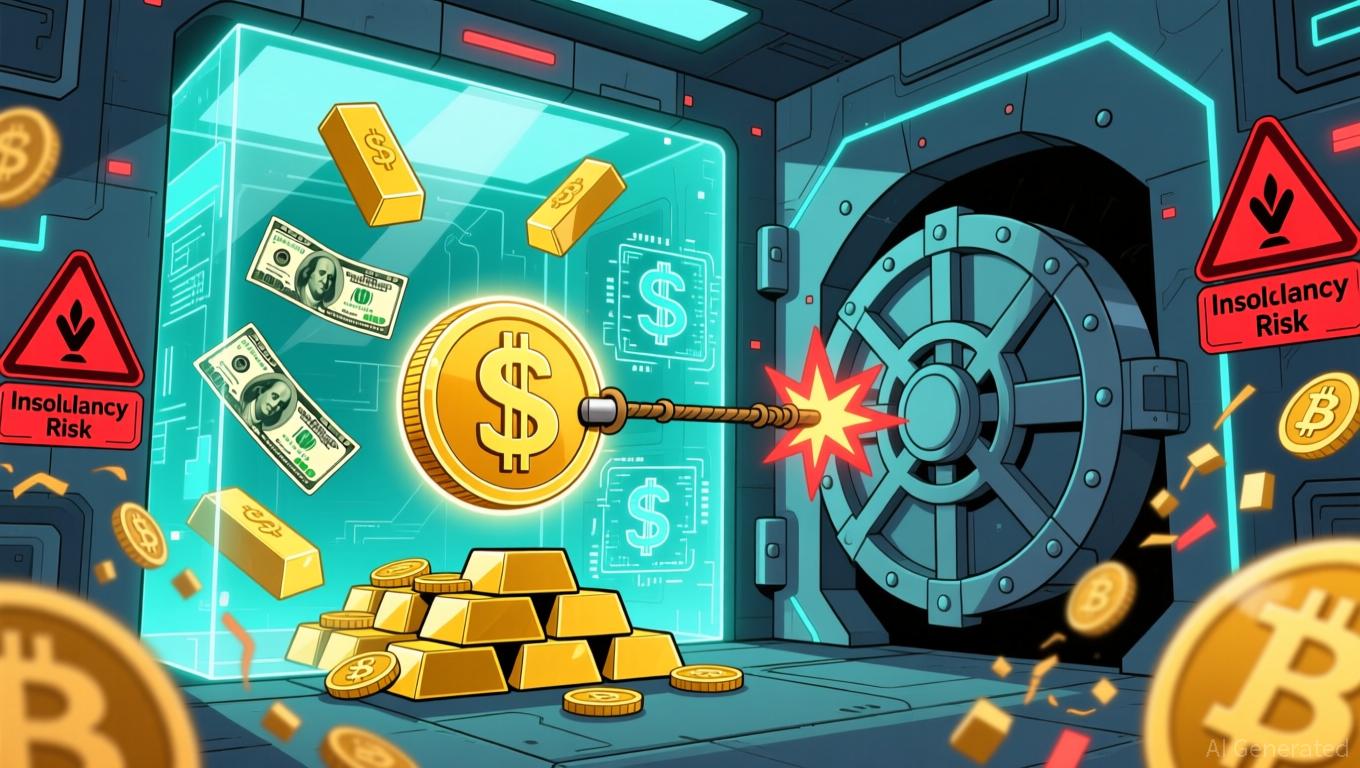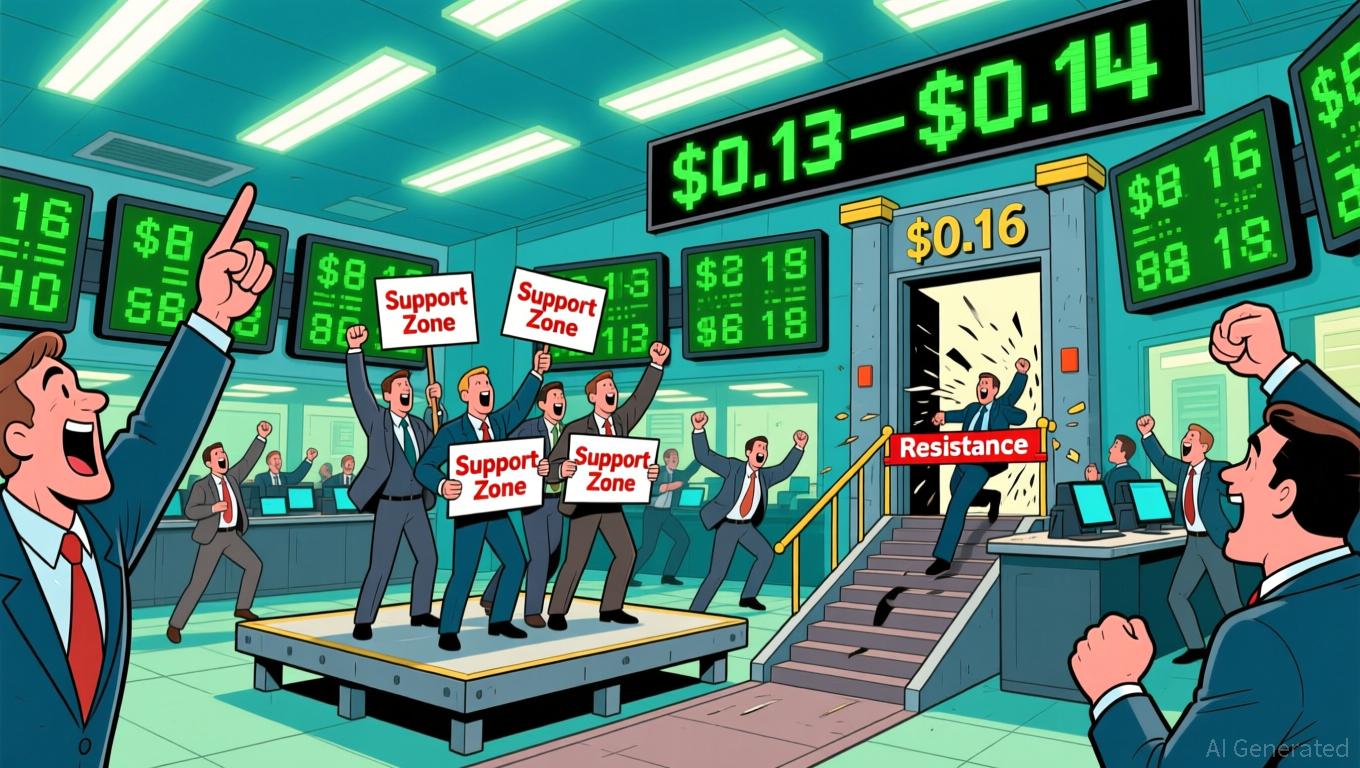Tokenized Treasuries Move from Concept to Real-World Application as OUSG Debuts
- Ripple and Ondo Finance launched OUSG on XRP Ledger, enabling institutional access to tokenized U.S. Treasuries via RLUSD stablecoin, a first-of-its-kind solution. - OUSG’s $670M TVL highlights tokenized treasuries’ growth, now exceeding $7B, driven by compliance-first infrastructure and 24/7 liquidity management capabilities. - XRP Ledger’s native tokenization, DEX, and MPT support position it as a strategic platform for institutional-grade RWA adoption, aligning with BCG’s $19T tokenization market proj

Ripple and Ondo Finance have introduced the Ondo Short-Term U.S. Government Treasuries (OUSG) on the XRP Ledger (XRPL), representing a notable leap forward in the realm of tokenized finance. This initiative allows institutions to access tokenized treasury assets through straightforward minting and redemption processes using Ripple’s RLUSD stablecoin, marking the first solution of its kind on XRPL. OUSG, which has accumulated more than $670 million in total value locked (TVL), now provides Qualified Purchasers with continuous, 24/7 access to U.S. Treasury securities, utilizing XRPL’s compliance-oriented framework and its fast, cost-effective settlement features.
Bringing OUSG to XRPL highlights the increasing momentum behind tokenized real-world assets (RWAs). The total value locked in tokenized U.S. Treasuries has surpassed $7 billion, fueled by products like OUSG as well as offerings from BlackRock and Franklin Templeton. Markus Infanger, SVP of RippleX at Ripple, noted that this project moves tokenized finance from concept to reality, giving institutions the ability to hold premium assets on public blockchains with both compliance and operational efficiency. The use of RLUSD as a stable settlement asset further boosts liquidity and cross-market functionality, with both Ripple and Ondo providing liquidity support.
XRPL’s design is tailored to serve as a robust platform for institutional-scale tokenization. Its native support for tokenization, integrated decentralized exchange (DEX), and features such as Decentralized Identifiers (DIDs) meet the compliance and efficiency needs of institutional users. A joint report from Ripple and Boston Consulting Group (BCG) points out that low-risk, high-utility assets like treasuries are at the forefront of tokenization, especially when paired with scalable infrastructure and compliant entry and exit points. XRPL’s forthcoming features, including Multi-Purpose Tokens (MPTs) and a lending protocol, further strengthen its position for institutional applications.
The introduction of OUSG demonstrates the practical benefits of tokenized treasuries. Traditional capital markets often struggle with fragmented settlement processes and idle cash reserves. By tokenizing treasuries on XRPL, institutions can redeploy funds almost instantly, stay compliant, and improve liquidity management across different regions. The round-the-clock availability and programmability of these tokenized assets also create new opportunities for optimizing collateral and enhancing cash flow efficiency.
Industry experts see this as a major step forward for tokenization. U.S. Treasuries have proven to be a strong fit in the RWA sector, with their adoption outpacing other asset types. The integration of OUSG on XRPL not only broadens institutional access to high-quality assets but also cements XRPL’s status as a center for compliant and efficient tokenized finance. As tokenization becomes a foundational element of today’s financial systems, the partnership between Ripple and Ondo paves the way for future advancements in asset digitization.
This development carries significant implications for the broader financial landscape. With tokenized treasuries now exceeding $7 billion in TVL, they illustrate how blockchain technology can improve capital efficiency while maintaining programmability and compatibility with on-chain finance. This trend supports BCG’s forecast that asset tokenization could expand into a $19 trillion market by 2033, propelled by scalable infrastructure and growing institutional participation.
Disclaimer: The content of this article solely reflects the author's opinion and does not represent the platform in any capacity. This article is not intended to serve as a reference for making investment decisions.
You may also like
Bitcoin News Update: S&P Rating Drop Highlights Tether’s Risky Asset Holdings and Lack of Transparency
- S&P downgrades Tether's USDT to "5 (weak)" due to high-risk reserves and transparency gaps. - Tether's 5.6% BTC exposure exceeds overcollateralization margins, risking undercollateralization if prices drop. - CEO dismisses critique as traditional finance bias, claiming no "toxic" assets in reserves. - Regulators intensify scrutiny as stablecoin centralization risks emerge amid $184B USDT circulation. - S&P urges Tether to reduce risky assets and enhance reserve disclosure to rebuild trust.

Dogecoin Latest Updates: Is a Repeat Performance on the Horizon? Holding $0.15 May Signal a 611% Rally for Dogecoin
- Dogecoin (DOGE) stabilized near $0.15 support, triggering historical 611% rally potential to $1 by 2026. - Grayscale's GDOG ETF and pending Bitwise BWOW ETF mark institutional adoption, though initial inflows remain muted. - Technical indicators show mixed momentum with RSI near oversold levels and key resistance at $0.16. - Market remains divided as ETF-driven liquidity and on-chain infrastructure contrast with macroeconomic and regulatory risks.

Turkmenistan’s Approach to Cryptocurrency: Centralized Oversight Amidst a Decentralized Age
- Turkmenistan legalizes crypto trading under strict 2026 regulations, granting state control over exchanges, mining , and custodial services. - Law mandates KYC/AML compliance, bans traditional banks from crypto services, and classifies digital assets into "backed" and "unbacked" categories. - Central bank gains authority to operate state-monitored distributed ledgers, contrasting with decentralized approaches in South Korea and Bhutan. - Framework aims to balance innovation with oversight, testing Turkme
Bitcoin News Update: Has $162 Billion Left Crypto Due to Institutional Buying or a Broader Market Pullback?
- BlackRock deposited 4,198 BTC and 43,237 ETH into Coinbase amid crypto sell-offs, despite $355.5M Bitcoin ETF outflows. - A 1.8M BTC ($162B) overnight exchange withdrawal sparks speculation about institutional accumulation or portfolio rebalancing. - $40B in BTC/ETH exchange inflows and record $51.1B Binance stablecoin reserves highlight institutional demand for regulated crypto products. - On-chain data shows 45% of large deposits (≥100 BTC) and 1.8M BTC withdrawals, indicating mixed market sentiment ah
